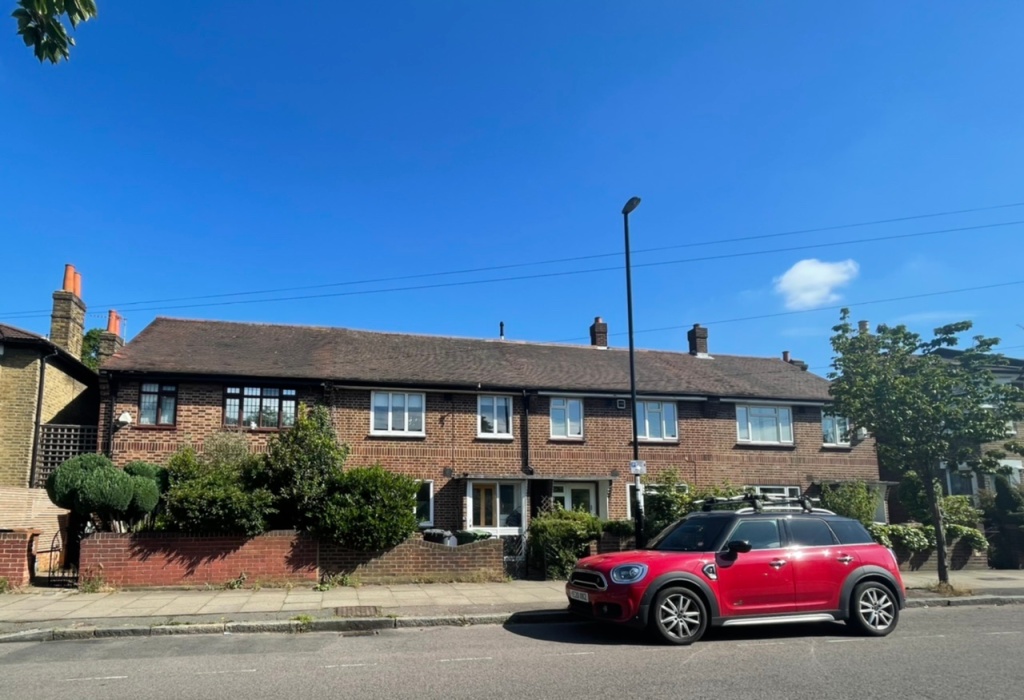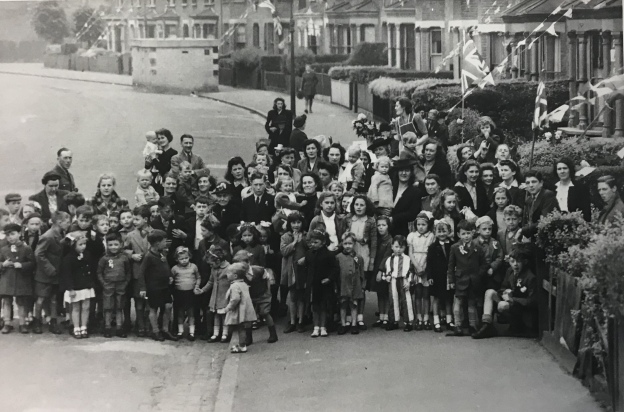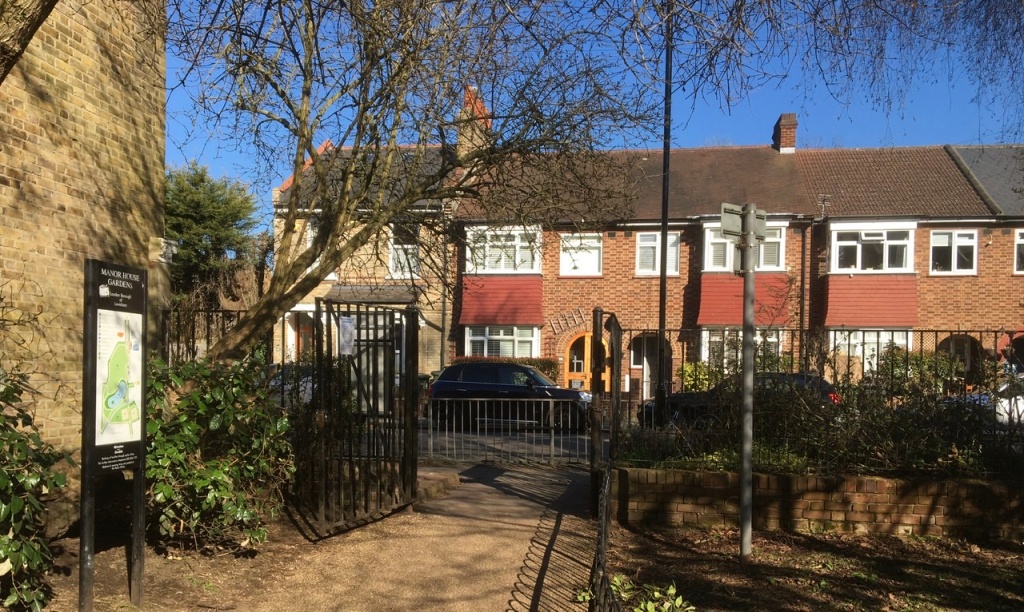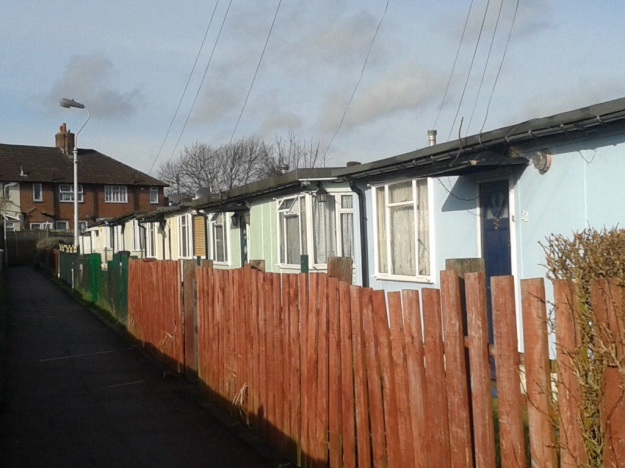Over the years Running Past has looked at the impact of the Blitz and the V-1 and V-2 attacks at the end of World War Two, as well as looking at the preparations that were made ahead of war being declared. This post takes a slightly different tack, looking at one street and the impact that was felt there – Taunton Road, a street of mainly Victorian terraced houses running from Burnt Ash Road to Manor Lane.
In the main we’ll look at World War Two, but we’ll start with World War One; like virtually every other street there were young men who went to war from Lee but who never returned….
Frank Eugene Gamblin was just 19 when he died on 31 May 1918 in Northern France. He was the son of Thomas and Edith Gamblin of 50 Taunton Road (at the corner of Hedgley Street). He was a Private in the Devonshire Regiment. Frank had been working part time as a ‘Milk Boy’ aged 12 in 1911, still at school and living in Rhyme Road in Lewisham.
Just beyond the school, at 58 Taunton Road, lived William Jupp; he had been born in Lee, although the family have moved to Hove for a while but was in the street by the 1911 census. At that point he was still at school, but just over seven years later, on 24 August 1918, he died near Albert in Northern France, aged just 21, a rifleman in the London Regiment. His parents, Rachael and William, were still living in Taunton Road.
James Woodnott was a Private in the London Regiment who died at Aubers Ridge on 4 October 1918 in Northern France and was buried close by. Born in 1886 he was the oldest of the five who died. He had grown up in Dacre Street; by 1909 he had married Fanny, and in 1911 he was working as a carman living in Neuchatel Road in Catford. They were living at 83 Taunton Road, opposite the park entrance, as war broke out with two children, born in 1913 and 1914.
Another man with links to the street was Alfred Edward (Edwin) Braine. He had a couple of rooms at number 13 before he went to war. Born around 1881, he seems to have lived on the street for much of his life – growing up at 37. He was serving as a Sergeant in the Royal Field Artillery when he died towards the end of on the war on 20 September 1918 and is buried or commemorated at the Vis-en-Artois Memorial. He may well have joined the Army at 18, someone of a similar name (the middle name is listed as Edwin) and age signed up in October 1899 in the same regiment.
Charles Frederick Broad had grown up in Taunton Road, born around 1896 his parents, Rose and Huntley, were living at 84 Taunton Road by 1901. He was still at school in 1911 but died less than six years later aged just 20 in Belgium on New Year’s Day 1917 where he was buried at Spoilbank Cemetery (pictured below). He was a Lance Corporal in the London Regiment. His parents were Huntley Charles Broad and Rose Matilda Broad still of 84 Taunton Road.
Two doors away at 80, was the mother of Ernest E Jackson; he was a Corporal in the Royal Fusiliers and died at Gallipoli on 13 August 1915, aged 22. He may have no direct contact to Lee other than through her – Mrs Florence Brosinovich, who had married Henry in 1893. Ernest was almost certainly born Brosinovich.
For reasons that will become clear, we will continue with the group of houses to the west of the park entrance where the Brosinovich and Broad households lived. Unlike the bigger houses in the streets to the south, that part of Taunton Road hadn’t changed that much between 1911 and the outbreak of World War Two, it was still predominantly single-family homes, mainly housing skilled working-class households, when the 1939 Register was collected.
Florence Brosinovich and some of her family were still at 80, they shared with another couple. 80 was the only shared house in the group, two households with 5 people and all but Florence worked.
The Broads were still at 84, Charles’ younger brother was working as a local government officer and his father in his 60s was working as a printer. Their neighbours at 86 were the Buttons where Robert worked as a lorry driver and got the ‘heavy work’ supplement which would have entitled him to larger rations. On the other side at 82 were three women sharing, including typist Doreen Tew, who would have turned 19 in the autumn of 1939.
Others in the group of houses to the west of the park included Amos and Elizbeth Howick at 70 who were in their 60s, he was a bricklayer and he too would have been entitled to the ‘Heavy Work’ supplement in the rations. The Wilsons at 74, included paper hanger Henry in his early 50s, his work wouldn’t have got the supplement.

A little further down the street was Hedgley Street School (now Trinity), which is pictured above; there is a separate post on this but just before the 1939 Register was collated most of the children would have been evacuated to Ashford in Kent. Although given it was another year until the start of the Blitz, many children will have drifted back to Taunton Road and neighbouring streets by the time bombing started.
As the children moved out, the Air Raid Precautions (ARP) service moved in. Their role has been explored in an earlier post but one of the but several of the Noble family from 49 Lampmead Road were to be based there. This included Phyllis (later Willmott) and her brother Joe who was injured when school bombed and seriously damaged with the front part largely destroyed in 1941 – the school never re-assembled.
Oddly the Nobles were to move to the house next door to the school (52) which had a yard (now part of the school playground) for Phyllis father’s building business – a trade that would have been kept very busy with repairing local bomb damage.
One of the earliest bombs to hit the street was on 25 September 1940 when an Anderson shelter in the garden of number 1, a small house on the opposite side to Sainsburys, took a direct hit – Charles (who worked at RAF Kidbrooke) and Claire Rivers both died, along with their 7-year-old daughter Sylvia – orphaning several other children. There were 11 there in October 1939, including five who were redacted presumably children who weren’t evacuated. One of the surviving children, Ruby, ended up in an orphanage but was discovered by a brother were returned to Lewisham on leave and reunited her with other family members.
The deaths at number one weren’t the first from the street during World War Two though. Sylvia Wickens from number 7 had volunteered to be an ARP Warden, she was based in Lewisham Town Centre and was one of 41 who died at Albion Way on 11 September 1940, when a public shelter took a direct hit.
Almost four years later another resident of the street died in an attack on Lewisham town centre – Maude Clarke from 85 died in the High Street V-1 attack in July 1944.
Returning to the Taunton Road, the most damaging raid was just before Christmas in 1940, when the section of the street that we covered above in relation to the 1939 Register was hit by a High Explosive bomb on 15 December. 82 probably took a direct hit as there was most damage there, but several other houses were destroyed beyond repair and replaced after the war with council homes.

At 82 there were two deaths – one was the 23-year-old Monica Tew, who was listed as the daughter of H Tew. It may be remembered that Monica’s sister, Doreen was living there in 1939, the Tews may be have been displaced by earlier raids elsewhere.
82 was a shared house by 1940, also there were the Setons whose 7-year-old daughter Elizabeth also perished. She had probably been originally been evacuated (see above) but had later returned to Lewisham.
Assuming that Florence Brosinovich had remained at 80 in the year since the 1939 Register was collected, she would have been made homeless – it seems that she moved to somewhere in the Reigate, Godstone, Dorking and Epsom area of Surrey where she died before the war was out in 1943.
There were other bombings on the street – lots of incendiary bombs fell around the junction with Wantage Road on 8 December 1940, not obviously causing any significant damage. At some stage houses closer to the now Sainsburys site were destroyed, although this was either missed when I went through the ARP logs or wasn’t recorded, not every incident was on busy nights.

At the end of the War, on VE Day there were celebrations of the end of the war, no doubt they were tempered by the deaths and injuries to friends and neighbours. There was certainly a party on Taunton Road, possibly two. The photograph above is taken from around the park entrance looking back towards Wantage Road – there is a concrete air raid shelter in the background. The one below is in the section close to Burnt Ash Road that was redeveloped 20 years or so later.

Notes & Credits
- The photograph of Spoilbank Cemetery is via Wikipedia on a Creative Commons
- Thank you to David Carter for the information about his family who were orphaned in September 1940 link here
- The photographs of VE parties are from the collection of Lewisham Archives, they are used with permission but remain their copyright
- The photograph of Hedgely Street School is from a booklet produced by Church of the Good Shepherd, Lee in 1956, p15 – it remains their copyright and was accessed via Lewisham Archives and was used with the permission of both
- The census and related data comes via Find My Past (subscription required)
- The World War One casualties come from the Commonwealth War Graves Commission website
- Most of the detail of the bombing raids come via the ARP Log for Lewisham which is held by Lewisham Archives
- Thank you to Denise Whibley Baba on Facebook for details of Alfred Edward (Edwin) Braine.











































